PLEKHA8
-
Official Full Name
pleckstrin homology domain containing, family A (phosphoinositide binding specific) member 8 -
Synonyms
PLEKHA8;pleckstrin homology domain containing, family A (phosphoinositide binding specific) member 8;pleckstrin homology domain-containing family A member 8;FAPP2;MGC3358;FAPP-2;hFAPP2;PH domain-containing family A member 8;Phosphatidylinositol-four-phosphate adapter protein 2;Phosphoinositide binding specificmember 8;Phosphoinositol 4 phosphate adaptor protein 2;Phosphoinositol 4-phosphate adapter protein 2;PKHA8_HUMAN;Pleckstrin homology domain containing family A (Phosphoinositide binding specific) member 8;Pleckstrin homology domain containing family A;PLEKHA8 protein;Serologically defined breast cancer antigen NY-BR-86
Recombinant Proteins
- Human
- Mouse
- Zebrafish
- Rhesus macaque
- Rat
- E.coli
- Mammalian Cells
- HEK293
- GST
- His
- Non
- Avi
- Fc
Background
What is PLEKHA8 Protein?
PLEKHA8, also known as TAPP1, is a protein that plays a significant role in cell signaling, particularly related to phosphoinositide pathways. It's part of the pleckstrin homology (PH) domain family, known for binding phosphoinositides and facilitating cellular processes like membrane trafficking and cytoskeletal dynamics. Research has pointed out its involvement in intracellular signaling pathways that control cell growth and communication, making it a protein of interest in cancer research where signaling pathways can be disrupted. Due to its interaction with lipids in the cell membrane, PLEKHA8 is crucial for maintaining cellular structure and function. This protein and its related pathways are keywords trending in studies focused on how cells communicate and migrate, revealing potential new avenues for therapeutic interventions.What is the Function of PLEKHA8 Protein?
PLEKHA8, known as TAPP1, is a player in cell signaling and structure. It’s part of the PH domain family, which is good at linking up with phosphoinositides, the lipid parts of cell membranes. This connection helps PLEKHA8 manage membrane traffic and the organization of the cytoskeleton, key for maintaining cell shape and movement. Researchers are interested in it because these processes are critical, especially when they go wrong in cancer. PLEKHA8's impact on how cells grow and communicate makes it a buzzword in cancer research, shedding light on cell signaling pathways and offering ideas for new cancer treatment strategies.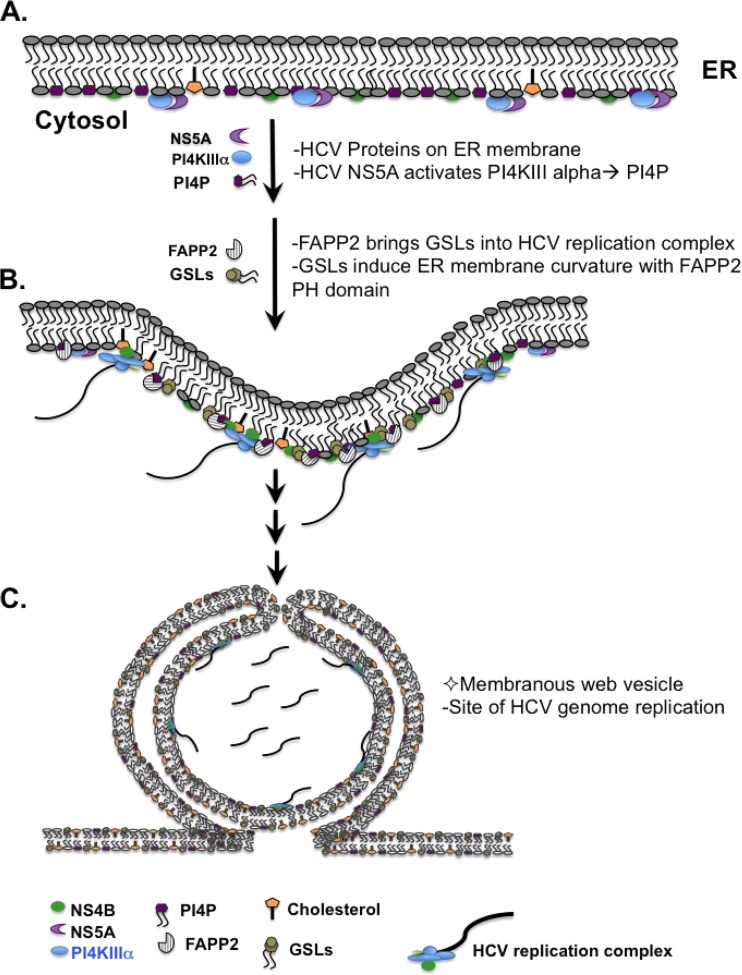
Fig1. Proposed model for the role of FAPP2 in HCV genome replication. (Irfan Khan, 2014)
PLEKHA8 Related Signaling Pathway
PLEKHA8, also called TAPP1, plays a role in phosphoinositide signaling pathways, which are vital for how cells communicate and function. This protein binds with phosphatidylinositols, key lipid messengers inside cells. Through this connection, PLEKHA8 helps manage pathways that control membrane changes and the organization of the cell's infrastructure, crucial for cell movement and growth. In cancer research, these pathways are often disrupted, making PLEKHA8 an important target for understanding how cancer cells spread and invade. By studying this protein, scientists aim to find new ways to treat diseases where cell signaling is faulty. Terms like "phosphoinositide signaling" and "membrane dynamics" keep PLEKHA8 at the forefront of research into cellular processes.PLEKHA8 Related Diseases
PLEKHA8, also known as TAPP1, is connected to several diseases because of its role in how cells signal and manage membranes. When it doesn't work correctly, it can mess up how cells talk to each other and move, which can lead to problems like cancer. It's especially important in cancers where uncontrolled cell growth and movement let tumors spread. There's a lot of interest in PLEKHA8 when looking at "cell signaling problems" and "cancer spread," as it's seen as a possible therapy target. By understanding how PLEKHA8 is involved, researchers aim to find ways to stop cancer from advancing, using insights from how this protein interacts in the body.Bioapplications of PLEKHA8
PLEKHA8, or TAPP1, offers promising bioapplications due to its role in cell signaling and structure. It’s an important part of how cells manage membranes and communicate, making it a key player in understanding diseases like cancer. Researchers are keen on the potential of PLEKHA8 in "cell therapy" and "cancer treatment," as targeting its pathways might help develop new treatments. By studying how PLEKHA8 influences cell movement and growth, scientists are exploring ways to control these processes, potentially offering breakthroughs for conditions where cell behavior is out of sync. With its involvement in these critical cellular activities, PLEKHA8 can provide insights not only into how cells operate under normal conditions but also how they go awry in various diseases.Case Study
Case Study 1: Yuan T. et al. Hematol Oncol. 2022
T-cell acute lymphoblastic leukemia (T-ALL) is a tough blood cancer to treat, often needing heavy-duty chemo because there aren't many targeted therapy options. Researchers looked into a protein called FAPP2 that's usually high in T-ALL to see if it's a useful target. When we knocked down FAPP2, T-ALL cells slowed down in growth and piled up in the sub-G1 phase, but they kicked autophagy into high gear. They saw increases in autophagy markers like LC3Ⅱ/Ⅰ, Beclin1, and ATG5, and a drop in P62. Also, fluorescence showed more LC3 hanging around the cell. Without FAPP2, levels of PI(4)P and PI(3,4,5)P went down, as did the phosphorylation of P-AKT and P-mTOR. So, cutting back on FAPP2 seems to curb cell growth and promote autophagy via the PI3K/AKT/mTOR pathway.-
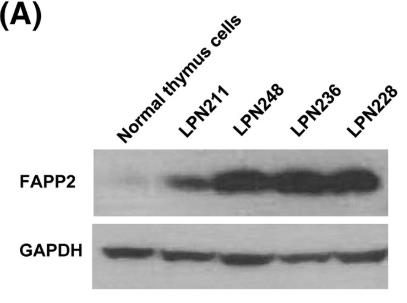 Fig1. The level of FAPP2 was measured by Western blot in mouse T-ALL cell lines.
Fig1. The level of FAPP2 was measured by Western blot in mouse T-ALL cell lines. -
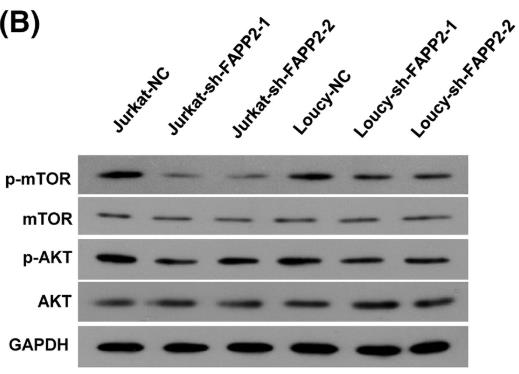 Fig2. The phosphorylation of AKT and mTOR in PI3K/AKT/mTOR pathway was assessed by Western blot assay.
Fig2. The phosphorylation of AKT and mTOR in PI3K/AKT/mTOR pathway was assessed by Western blot assay.
Case Study 2: Chen J. et al. Exp Cell Res. 2019
FAPP2, usually known for helping with lipid transport in cells, shows up a lot more in colon cancer cases than in nearby normal tissue. Using CRISPR/Cas9 to cut down on FAPP2 in colon cancer cells made them grow slower, as shown by CCK8 and colony formation tests, and they were less aggressive in mouse models. On the flip side, boosting FAPP2 levels helped cancer cells grow. Tests also showed that FAPP2 influences tumor growth through the Wnt/β-catenin signaling pathway. So, FAPP2 could be acting like an oncogene and might be a target for new colon cancer treatments.-
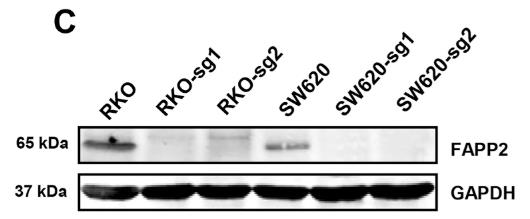 Fig3. Western blotting confirmed the expression of FAPP2 in SW620/FAPP2-sgRNAs and RKO/FAPP2-sgRNAs cells.
Fig3. Western blotting confirmed the expression of FAPP2 in SW620/FAPP2-sgRNAs and RKO/FAPP2-sgRNAs cells. -
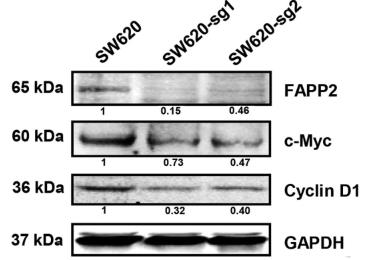 Fig4. Western blot was employed to detect expression levels of c-Myc and Cyclin D1.
Fig4. Western blot was employed to detect expression levels of c-Myc and Cyclin D1.
Quality Guarantee
High Purity
-
.jpg) Fig1. SDS-PAGE (PLEKHA8-1720H)
Fig1. SDS-PAGE (PLEKHA8-1720H)
Involved Pathway
PLEKHA8 involved in several pathways and played different roles in them. We selected most pathways PLEKHA8 participated on our site, such as , which may be useful for your reference. Also, other proteins which involved in the same pathway with PLEKHA8 were listed below. Creative BioMart supplied nearly all the proteins listed, you can search them on our site.
| Pathway Name | Pathway Related Protein |
|---|
-
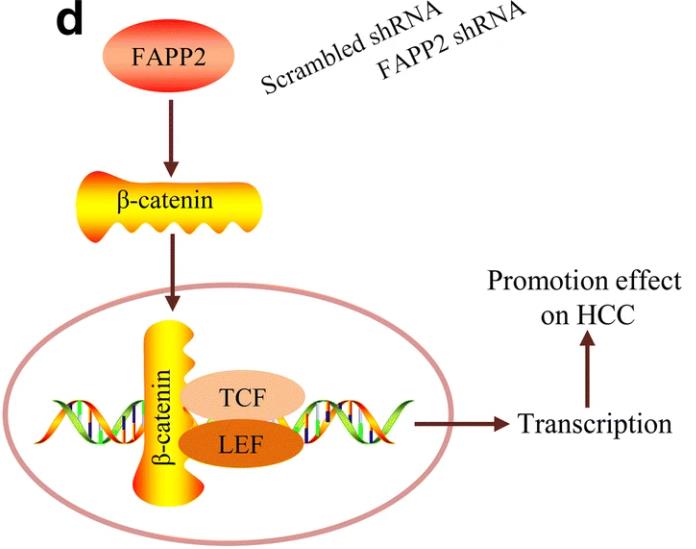 Fig1. A synopsis of FAPP2-mediated Wnt/β-catenin signaling in regulating tumorigenesis of HCC. (Wanhu Fan, 2020)
Fig1. A synopsis of FAPP2-mediated Wnt/β-catenin signaling in regulating tumorigenesis of HCC. (Wanhu Fan, 2020) -
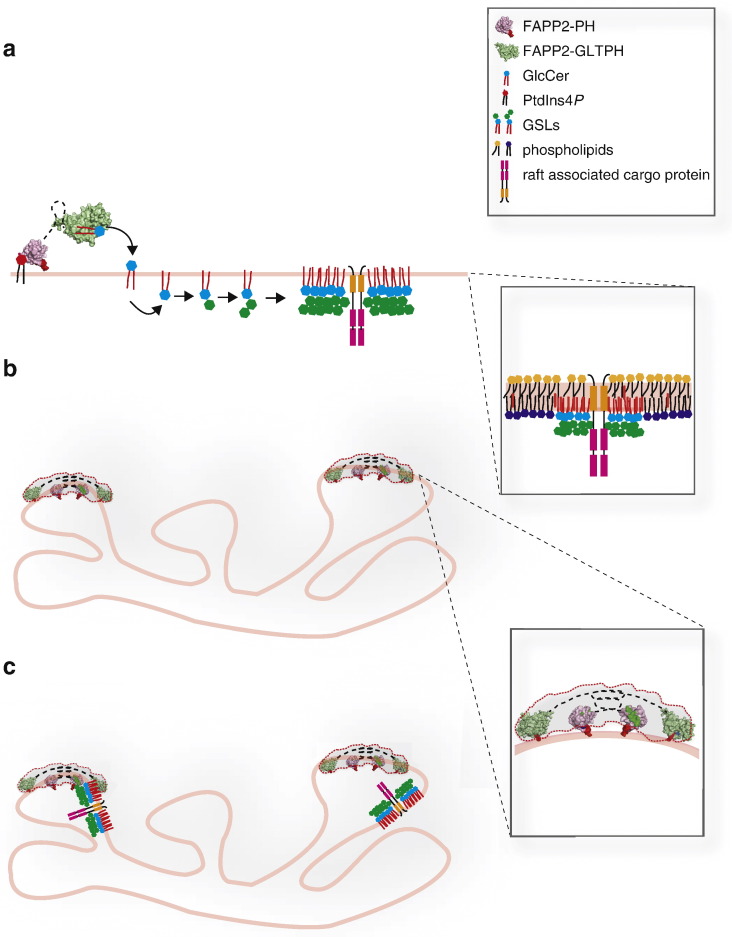 Fig2. The roles of FAPP2 in the biogenesis of transport carriers at the TGN. (Giovanni D'Angelo, 2012)
Fig2. The roles of FAPP2 in the biogenesis of transport carriers at the TGN. (Giovanni D'Angelo, 2012)
Protein Function
PLEKHA8 has several biochemical functions, for example, ceramide binding,glycolipid binding,glycolipid transporter activity. Some of the functions are cooperated with other proteins, some of the functions could acted by PLEKHA8 itself. We selected most functions PLEKHA8 had, and list some proteins which have the same functions with PLEKHA8. You can find most of the proteins on our site.
| Function | Related Protein |
|---|---|
| phosphatidylinositol-4-phosphate binding | LANCL2,RS1,ARFIP2,OSBP,CLSTN2,COL4A3BP,PRRC2B,GOLPH3,OSBPL5,ARFIP1 |
| glycolipid binding | GLTPD2,PRRC2B,HSPA2,GLTP,PLEKHA8P1,CD1C,CLEC4F,CPTP,GLTPD1 |
| ceramide binding | COL4A3BP,PRRC2B |
| glycolipid transporter activity | PLEKHA8P1,PRRC2B,CPTP,GLTPD2,GLTP |
Interacting Protein
PLEKHA8 has direct interactions with proteins and molecules. Those interactions were detected by several methods such as yeast two hybrid, co-IP, pull-down and so on. We selected proteins and molecules interacted with PLEKHA8 here. Most of them are supplied by our site. Hope this information will be useful for your research of PLEKHA8.
KPNB1;MASTL;CDKN2AIPNL;FANCI;FAN1
Resources
Related Services
Related Products
References


